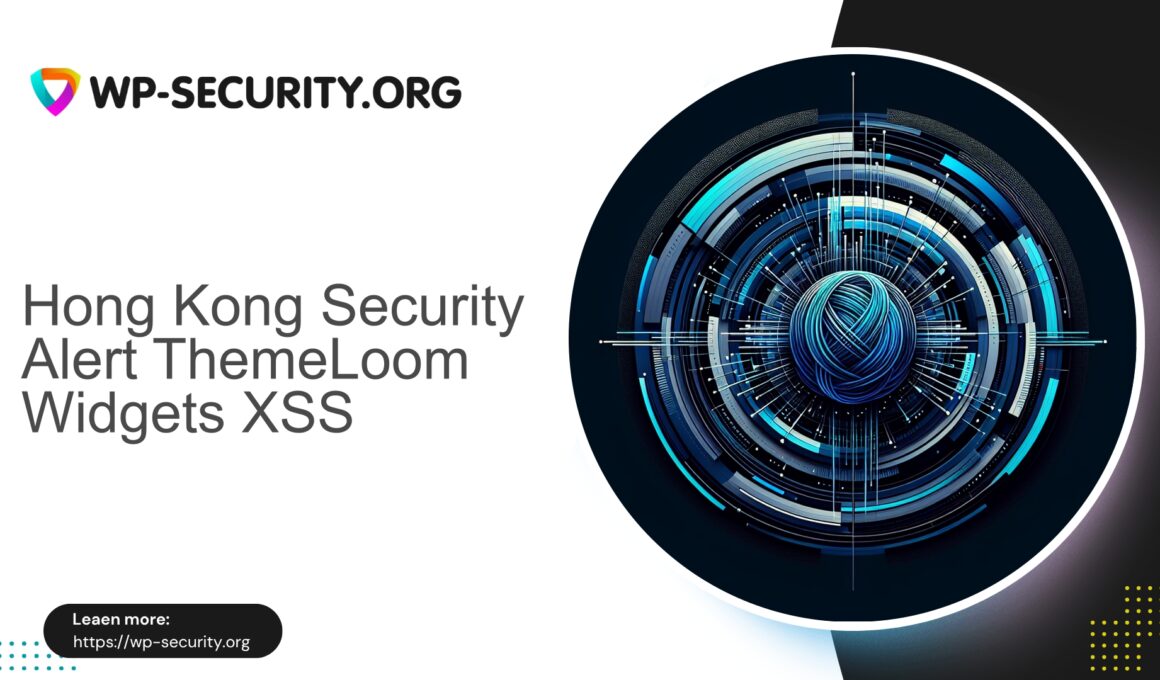| Plugin Name | ThemeLoom Widgets |
|---|---|
| Type of Vulnerability | Stored XSS |
| CVE Number | CVE-2025-9861 |
| Urgency | Low |
| CVE Publish Date | 2025-09-11 |
| Source URL | CVE-2025-9861 |
ThemeLoom Widgets — Stored XSS (CVE-2025-9861)
A concise technical advisory and mitigation guide written from a Hong Kong security practitioner’s perspective.
Executive summary
ThemeLoom Widgets contains a stored cross-site scripting (XSS) vulnerability that can allow malicious scripts to be saved in widget configuration and executed later when an administrator or site user views the affected page. The vulnerability has been assigned CVE-2025-9861 and was published on 2025-09-11. The issue is rated as low urgency, but operators should treat stored XSS seriously because it can lead to session theft, unauthorized actions in admin contexts, or malware persistence.
Technical details
The plugin fails to properly sanitize or escape user-provided widget fields before persisting them to the database and rendering them in the WordPress admin or front-end. Stored XSS typically occurs when attacker-controlled input (for example, a widget title or content field) is saved and later rendered without proper output escaping, allowing arbitrary JavaScript to execute in the context of a victim’s browser.
Key characteristics:
- Vulnerability vector: widget configuration fields (input persisted in DB).
- Execution context: admin dashboard pages and possibly front-end pages that render vulnerable widget output.
- Impact: script execution in user browsers with the privileges of the victim; potential for session cookie access, CSRF-style actions, or administrative account compromise if an administrator views the infected page.
Who is affected
Sites using the ThemeLoom Widgets plugin that accept widget content from untrusted or low-privilege users are at risk. Multi-author sites, sites that allow guest widget content, and networks with many contributors are more likely to be exposed. Administrators and editors who view widget listing or preview pages are high-value targets for an attacker.
Detection and indicators
Look for the following signs when investigating potential compromise or confirming presence of stored XSS:
- Widget configuration entries in the database (wp_options or wp_posts depending on plugin implementation) containing
<script>tags or event attributes (e.g.,onload,onclick). - Unexpected inline JavaScript appearing on admin pages or front-end pages where widgets are rendered.
- Suspicious API activity, users performing unusual actions after viewing widget pages, or alerts from intrusion detection/logging systems showing anomalous requests.
To inspect database fields safely, query your staging copy or a database dump; do not execute unknown scripts in a live admin session.
Mitigation and remediation (recommended)
As a Hong Kong-based security practitioner I recommend pragmatic, immediate steps to reduce risk, followed by longer-term hardening:
Immediate actions
- Update the plugin to the latest version if a patch is available. If no patch exists, consider deactivating the plugin until the vendor provides a fix.
- Restrict who can edit widgets. Ensure only trusted administrator or editor accounts have the capability to manage widgets.
- Search the database for suspicious script tags in widget options or plugin-specific tables and remove or neutralize them. Prefer editing stored content to remove script tags rather than rendering or executing pages that might trigger payloads.
- Force a password reset and rotate keys for accounts that may have viewed infected content and for any accounts showing suspicious behaviour.
Medium-term hardening
- Apply strict output escaping in plugin templates where widget content is rendered. Use WordPress core escaping functions: esc_html(), esc_attr(), wp_kses(), etc., depending on the allowed content.
- Sanitize inputs at the point of storage using functions such as sanitize_text_field() or a properly configured wp_kses() whitelist for controlled HTML. Avoid storing raw, unvalidated HTML from user-controlled sources.
- Implement Content Security Policy (CSP) headers to limit the impact of injected scripts by restricting allowed script sources.
- Harden administrator access: enforce strong passwords, enable MFA for admin users, and restrict IP ranges or use administrative access controls where possible.
Example safe coding patterns
When rendering a widget title or simple text field, escape at output:
<?php echo esc_html( $instance['title'] ); ?>If limited HTML is required, sanitize on input or before output with a whitelist:
$allowed = array(
'a' => array('href' => array(),'title' => array()),
'strong' => array(),
'em' => array(),
);
$clean = wp_kses( $raw_input, $allowed );Post-incident checklist
- Confirm and remove any malicious payloads from the database (use a staging environment or database dump for safe analysis).
- Audit user accounts and access logs for suspicious activity; revoke or reset compromised accounts and API keys.
- Rotate administrative credentials and update authentication secrets if compromise is suspected.
- Review site backups and restore to a known-good point if necessary; ensure backups themselves are free of injected scripts before restoring to production.
- Perform a full site scan for additional injected content (pages, posts, comments, options).
Timeline and disclosure
CVE-2025-9861 was published on 2025-09-11. Site operators should track the plugin vendor’s advisory for an official patch and release notes. If you discover active exploitation on your site, treat it as an incident: isolate the environment, collect forensic evidence (logs, DB snapshot), and remediate as above.
Local perspective — Hong Kong considerations
Hong Kong hosts many small and medium businesses and financial service providers running WordPress for public sites and internal portals. Even a vulnerability rated as “low” can have outsized reputational or operational impact in regulated sectors. Organisations should prioritise timely patching, strict access control, and periodic security reviews, especially for externally-facing management interfaces.
